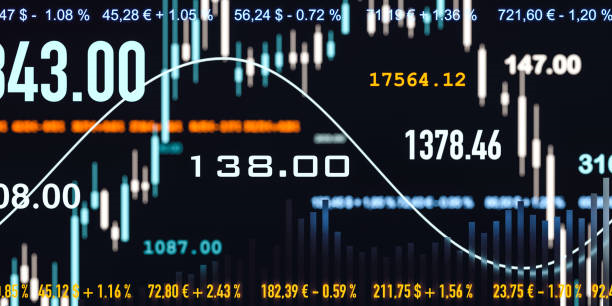The United Arab Emirates (UAE) has become a hub for financial trading, with CFD trading and foreign exchange trading being among the most popular forms of investment. The region’s strategic location and business-friendly environment have attracted a multitude of traders from around the globe. However, the world of CFD trading (In Taiwan, it is called “差價合約交易“) can be complex and challenging for newcomers. To ensure success in this dynamic market, traders must employ effective strategies and maintain a disciplined approach. This article will explore several strategies that can help traders navigate the CFD trading landscape in the UAE and maximize their potential for success.
Understanding the Market Dynamics
Before diving into CFD trading, it’s crucial to understand the market dynamics. The UAE’s financial market is influenced by various factors, including global economic trends, regional political stability, and local regulations. Traders must stay informed about these factors to make informed decisions. For instance, fluctuations in oil prices can significantly impact the UAE’s economy, as the country is one of the world’s largest oil producers. Additionally, geopolitical events in the Middle East can create volatility in the financial markets, providing both risks and opportunities for traders.
Developing a Solid Trading Plan
A well-structured trading plan is essential for success in CFD trading. This plan should outline your trading objectives, risk management strategies, and exit strategies. It’s important to set realistic goals and to be disciplined in following your plan. For example, you might decide to focus on specific sectors, such as real estate or technology, based on your research and analysis. Your plan should also include a risk management strategy, such as setting stop-loss orders to limit potential losses. By having a clear plan in place, you can avoid impulsive decisions and maintain a disciplined approach to trading.
Mastering Technical Analysis
Technical analysis is a critical component of successful forex CFD trading (In Arabic, it is called “تداول الفوركس“). It involves studying historical price movements and using various tools and indicators to predict future price trends. Traders in the UAE should familiarize themselves with common technical analysis tools, such as moving averages, trend lines, and support and resistance levels. By mastering these tools, you can identify potential entry and exit points for your trades and make more informed decisions. Additionally, staying updated on the latest market trends and news can help you anticipate market movements and adjust your trading strategies accordingly.
Managing Risk Effectively
Risk management is a vital aspect of CFD trading, as it helps to protect your capital and minimize potential losses. One effective way to manage risk is by diversifying your portfolio. This involves spreading your investments across different assets, sectors, and regions to reduce exposure to any single market. Another strategy is to use stop-loss orders, which automatically close your trade if the price reaches a predetermined level. This can help limit your losses in case the market moves against your position. It’s also important to maintain a disciplined approach to risk management, such as setting a maximum percentage of your capital that you’re willing to risk on any single trade.
Staying Updated on Regulatory Changes
The regulatory landscape for CFD trading in the UAE is constantly evolving, with new rules and regulations being introduced regularly. Traders must stay informed about these changes to ensure compliance and avoid potential penalties. This might involve monitoring announcements from regulatory bodies, such as the Securities and Commodities Authority (SCA), or subscribing to industry newsletters and updates. By staying updated on regulatory changes, you can adapt your trading strategies accordingly and maintain a competitive edge in the market.
Leveraging Educational Resources and Support
The world of CFD trading can be complex, and it’s essential to continually learn and improve your skills. Many brokerage firms and financial institutions in the UAE offer educational resources and support for traders, such as webinars, workshops, and online courses. These resources can help you gain a deeper understanding of the market, learn new trading strategies, and improve your overall trading performance. Additionally, joining trading communities and forums can provide valuable insights and networking opportunities with other traders in the region.
Embracing Technology for Enhanced Trading
Technological advancements have revolutionized the world of trading, providing traders with powerful tools and platforms to execute their strategies. In the UAE, traders have access to cutting-edge trading platforms that offer advanced features, such as real-time market data, customizable charts, and automated trading capabilities. By embracing these technologies, you can streamline your trading process, make more informed decisions, and potentially increase your profitability. For example, algorithmic trading systems can help you execute trades at optimal times based on predefined criteria, while advanced charting tools can help you identify market trends and patterns more accurately.
Building a Strong Network
Networking is an often overlooked aspect of successful trading, but it can be a valuable resource for gaining insights, sharing knowledge, and staying updated on market trends. In the UAE, there are numerous events, conferences, and meetups where traders can connect with industry professionals and fellow traders. By building a strong network, you can gain access to exclusive information, learn from the experiences of others, and potentially uncover new trading opportunities.
In conclusion, successful CFD trading in the UAE requires a combination of knowledge, discipline, and effective strategies. By understanding the market dynamics, developing a solid trading plan, mastering technical analysis, managing risk effectively, staying updated on regulatory changes, leveraging educational resources, embracing technology, and building a strong network, traders can increase their chances of success in this dynamic and competitive market. As the financial landscape continues to evolve, it’s essential for traders to adapt and refine their strategies to stay ahead of the curve and capitalize on the opportunities that arise.

